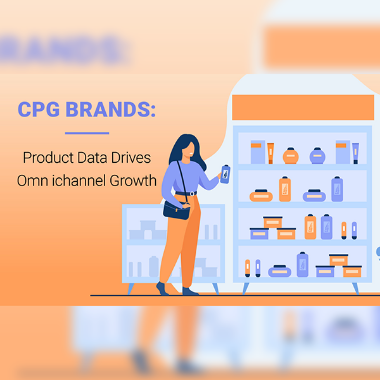CPG brands have ever-expanding opportunities beyond traditional sales channels. With deceptively low barriers to entry, teams tasked with omnichannel growth often believe that adding products on a new marketplace, or direct-to-consumer site, will be quick and easy. Just upload your product catalog and you’re ready to reap the rewards of a new revenue stream. Unfortunately, it’s just not that easy.
Let’s face it, data is complicated. Where is it located? Is it accurate? Can it be altered to each format you need to amplify your message? These may seem like simple questions but they are often tricky to answer – particularly for growing CPG brands.
Channel expansion can quickly lead to customer disappointment, poor reviews and high returns if incomplete and/or inaccurate information floods the market. For channel expansion to be successful, merchandisers need to put product data at the center of their omnichannel strategy to drive revenue growth and customer engagement.
Why Marketers, Channel Merchandisers Need Product Data
Today’s consumers expect seamless product experiences that serve them where and when they want. They discover inspirational images on social media, read in-depth descriptions on the brand site, compare customer reviews on a marketplace and engage with samples in store. This is a coordinated narrative that involves much more than posting basic product attributes on a website.
Every touchpoint delivers a portion of the product story, contributing to the whole experience. Imagine the frustration and confusion when shoppers find conflicting prices or product details in different channels. Product data is integral to fueling consistent and compelling customer journeys that deliver omnichannel growth.
Connecting Product Data to Create Engaging Content
As a product travels through the value chain, each team along the way contributes rich information to its narrative to form a strategic asset. As the product comes to life, it grows to include specifications and quality details. However, in many organizations, this product origin story remains trapped within development and manufacturing teams.
Data is extracted into disconnected points and passed off to downstream partners in marketing and sales. With each transition through scattered systems and functional silos, data integrity degrades. Too often, teams spend more time collecting and cleansing product data than they do creating compelling customer content.
Instead, marketers for CPG brands need to build on the existing framework and enhance the data further. Working in a unified product platform alongside development teams allows merchandisers to incorporate rich descriptions and digital assets with the product record, and seamlessly transform technical data into compelling content. This mitigates errors in data transfers and minimizes time duplicating efforts in separate systems. Marketers can then confidently create accurate and engaging product content.
Connecting Content to Create Seamless Experiences
Once product information is consolidated into a central source, commerce teams still need to distribute it to customers and personalize the experience in each channel. That’s easier said than done.
If a single product has five SKU variations, with localized content for five regions, and different distribution formats for five channels in each market. That’s 125 output versions for one product. Multiply that for a full catalog, layer in the fast pace of product and retail changes, and it quickly becomes overwhelming.
Merchandisers need to incorporate product data within automated workflows, analytics and distribution agility to unlock greater potential. Connected systems and processes streamline content management tasks such as translations, document revisions, category updates and copy approvals. Channel teams can then invest more in value-added activities that increase customer engagement, including deeper content analysis.
Linking customer data with product information allows merchandisers to understand both content quality and content impact. Actionable insights on which product presentations resonated the most with customers drive optimization for greater omnichannel conversions. This grows both market share and brand loyalty with stronger performance in existing channels and product categories.
Finally, flexibility is key to delivering information in multiple formats and capitalizing on channel diversity. Teams need to synchronize distribution of content across all sales channels, but each of those needs data in a different format, with inconsistent fields, document types and integrations. Template exports and commerce system connections allow customized content to flow seamlessly through channels to reach customers anywhere they engage with the product. This distribution agility enables businesses to quickly expand into new channels and global regions.
CPG brands and their marketing teams need a centralized source for rich content and optimized omnichannel distribution, leveraging product information to deliver seamless customer experiences. By connecting people, processes and systems in a unified platform, the power of product data is unlocked to drive revenue growth and customer engagement.
The following Jill Mueller , from 2022 provides their research perspective. HERE



